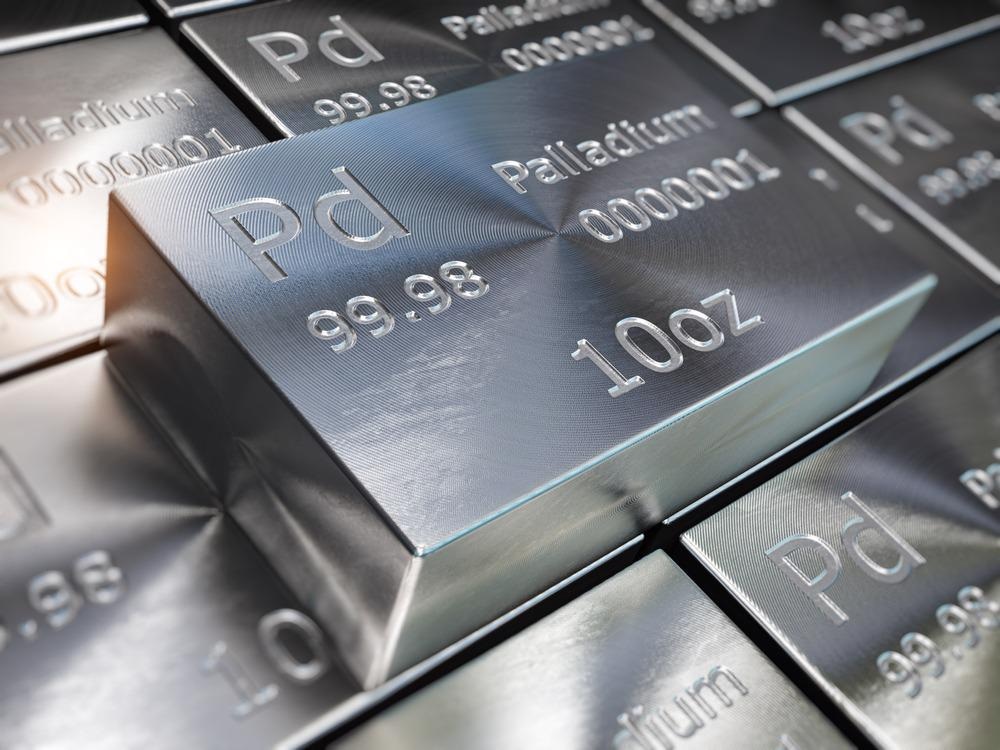In a recent study published in the journal ACS Applied Energy Materials, researchers analyzed a palladium (Pd) composite-based electrocatalyst as an alternative to platinum (Pt) electrocatalyst-based anodes for application in methanol-based fuel cells.

Study: Lamellar and Conductive Ion Associations Advance the Electrochemical Catalytic Performance of Palladium. Image Credit: Maxx-Studio/Shutterstock.com
The fabricated Pd composite-based anode containing a Pd to molybdenum (Mo) atomic ratio of 1.8:1 demonstrated excellent catalytic performance for methanol oxidation reaction (MOR) with a high peak current density of 2178 mA·mg-1metal owing to high ion loading efficiency, good conductivity, rapid mass transferring in the lamellar structure, and the formation of abundant strain defects.
Additionally, high current density and mass activity retention after several cycles make it a promising electrochemical catalyst for the loading of various noble metals for the anode.
Electrocatalyst for Direct Methanol Fuel Cells
Hydrogen has safety issues during transportation and storage, which can be alleviated by converting it into other chemical compounds, such as methanol, ammonia, methane, and ethylene glycol, and converting it back to its original form inside a sophisticated fuel cell.
Direct methanol fuel cells (DMFCs) are a new generation of portable fuel cells in which methanol is directly converted into hydrogen before being used as fuel to generate electric current. The major issue with DMFCs is that the MOR has very slow kinetics on the anode.
The Pt- rubidium (Ru) alloy is the most commonly used catalyst for anodes that perform MOR. However, Pt has a limited reserve, and it is expensive, which hinders its application in DMFCs. Alternatively, non-Pt catalysts such as Pd composite-based electrocatalyst, nickel-based electrocatalyst, and copper-based electrocatalysts, which are more abundant on Earth, have shown excellent electrocatalytic performance.
About the Study
In this study, researchers synthesized a Pd composite-based electrocatalyst, designated as PdMoCTAB, by hydrothermally mixing Na2PdCl4, (NH4)6Mo7O24, and cetyltrimethylammonium bromide (CTAB).
The prepared composite had a conductive and lamellar ion association type colloid solution form. The Pd and Mo composition ratio of the electrolyte was varied by varying the amount of Na2PdCl4, (NH4)6Mo7O24 in the mixture.
Three compositions of Pd and Mo with atomic mass ratios of 1.8:1, 2.4:1, and 0.74:1were synthesized and denoted as Pd1.8Mo, Pd2.4Mo, and Pd0.74Mo. The presence of Pd contributed to the conductivity, whereas the electrostatic attraction of CTA+ towards [Mo7O24]6− and [PdBr4]2 resulted in the formation of an ion association with lamellar gaps.
Pd/PdMoCTAB sphere nanoparticles (denoted as Pd0.74Mo), Pd/PdMoCTAB nanosheets (denoted as Pd2.4Mo), and a mixture of (NH4)6Mo7O24 and CTAB (denoted as MoCTAB) were synthesized for the comparison.
Observations
Cyclic voltammetry (CV) results showed that the hydrogen adsorption charge of Pd1.8Mo, Pd2.4Mo, and Pd0.74Mo were 80.57, 44.40, and 37.09 m2g−1, respectively. The mass activity of Pd1.8Mo of about 2178 mA mg−1 was 2.6 times larger than that of Pd0.74Mo (829 mA mg−1) and two times larger than that of Pd2.4Mo (1076 mA mg−1).
The CO tolerance of catalysts, which was evident from the ratio of forward and backward current peaks (If/Ib), were 2.54, 2.08, and 1.7 for Pd1.8Mo, Pd2.4Mo, and Pd0.74Mo, respectively.
Conclusions
In summary, in this study researchers synthesized Pd composite-based electrocatalysts, PdMoCTAB, to replace Pt-based electrocatalyst for MOR performing anode material of DMFC by mixing Na2PdCl4, (NH4)6Mo7O24, and CTAB. Three samples with varied Pd to Mo atomic mass ratios were denoted as Pd1.8Mo, Pd2.4Mo, and Pd0.74Mo.
The Pd1.8Mo sample inside a chubby and lamellar structure demonstrated the optimum electrocatalytic performance owing to the generation of strain defects, steps, and kinks. Other than high current density, Pd1.8Mo exhibited high current density and mass activity retention after several cycles, more active centers, accelerating mass transfer, and tolerance to CO poisoning. Hence, Pd1.8Mo is a suitable alternative to Pt-based electrocatalyst for MOR.
Reference
Shi, J., Li, M., Zheng, Y., Ying, Y., Guo, X., Wu, Y., Liu, X., Wen, Y., Yang, H., Lamellar and Conductive Ion Associations Advance the Electrochemical Catalytic Performance of Palladium. ACS Applied Energy Materials, 2022, https://pubs.acs.org/doi/10.1021/acsaem.1c02545
Disclaimer: The views expressed here are those of the author expressed in their private capacity and do not necessarily represent the views of AZoM.com Limited T/A AZoNetwork the owner and operator of this website. This disclaimer forms part of the Terms and conditions of use of this website.